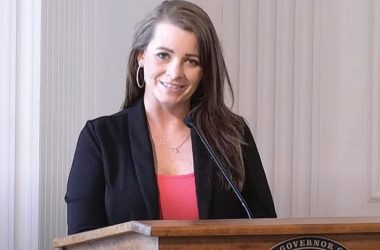WVU Today
MORGANTOWN, W.Va. — Einstein’s theory of gravity, general relativity, predicts that all objects fall in the same way, regardless of their mass or composition. But does this principle also hold for objects with extreme gravity?
An international team of astronomers, which includes Duncan Lorimer, West Virginia University professor of physics and astronomy, has tested Einstein’s theory using three stars orbiting each other: a neutron star and two white dwarfs. Their findings, published in “Nature” today (July 5), prove that Einstein’s theory still passes the test in such extreme conditions.
A hammer and a feather fall with the same acceleration on the moon. And a light cannon ball hits the ground at the same time as a heavy cannon ball when dropped off the Leaning Tower of Pisa. Even the Earth and the moon fall in the same way toward the sun. Einstein’s theory of gravity has passed all tests in laboratories and elsewhere in our solar system. But most alternative theories predict that objects with extreme gravity, like neutron stars, fall a little differently than weak-gravity objects.
Luckily, astronomers have found a natural laboratory to test this theory in extreme conditions: the triple star system called PSR J0337+1715, which is located 4,200 light years from Earth.
In this unique system, discovered by WVU graduate student Jason Boyles in 2012, a neutron star is in a 1.6-day orbit with a white dwarf, and together, the pair is in a 327-day orbit with another white dwarf further away. If alternative theories of gravity are correct, then the neutron star and the inner white dwarf will fall differently toward the outer white dwarf, however Einstein’s theory predicts no difference.
“This remarkable system turns out to be the most precise laboratory to carry out these tests,” said Lorimer, who carried out some of the Green Bank Telescope and Arecibo observations.
Scientists were able to measure the orbits by looking at the neutron star alone. Neutron stars are the remains of massive stars that have exploded as supernovae. Millisecond pulsars are rapidly rotating neutron stars. PSR J0337+1715 rotates 366 times per second, sending out beams of radio waves. The waves sweep over the earth at regular intervals, like a cosmic lighthouse, allowing scientists to track the position of the neutron star.
Lorimer and the team of astronomers followed the neutron star for six years using the Green Bank Telescope in West Virginia, the Westerbork Synthesis Radio Telescope in the Netherlands and the Arecibo Observatory in Puerto Rico.
“Not only did the Green Bank Telescope provide the discovery of this unique system, but it also played a key role in the timing campaign our team has carried out,” Lorimer said.
The work is so precise that scientists can account for every single pulse of the neutron star since the beginning of their observations, and they can tell its location to within a few hundred meters. If the neutron star fell differently from the white dwarf, the pulses would arrive at a different time than expected.
Any difference between the accelerations of the neutron star and white dwarf is too small to detect. Once again, Einstein’s theory of gravity passes this test and provides the simplest and most accurate description of this complex gravitational system.
“These observations have limited the difference to be less than 3 parts in a million,” Lorimer said. “This groundbreaking result limits the room for any alternative theories of gravity and has improved upon the best previous tests by a factor of about ten.”
These new results provide confirmation, yet again, that Einstein’s theory—which is based largely on pure thought and physical intuition—describes very precisely the motion of bodies in strong gravitational fields.
“We know that the theory will ultimately break down when trying to describe the singularities of black hole,” Lorimer added. “However in the regime probed by these experiments, Einstein’s theory reigns supreme.”
Citation
Title: Nature, volume 559, pages 73–76 (2018)
DOI: https://doi.org/10.1038/s41586-018-0265-1
CONTACT: Laura Fletcher; WVU Eberly College of Arts and Sciences
304.293.6867; [email protected]
Follow @WVUToday on Twitter.
See more from WVU Today





